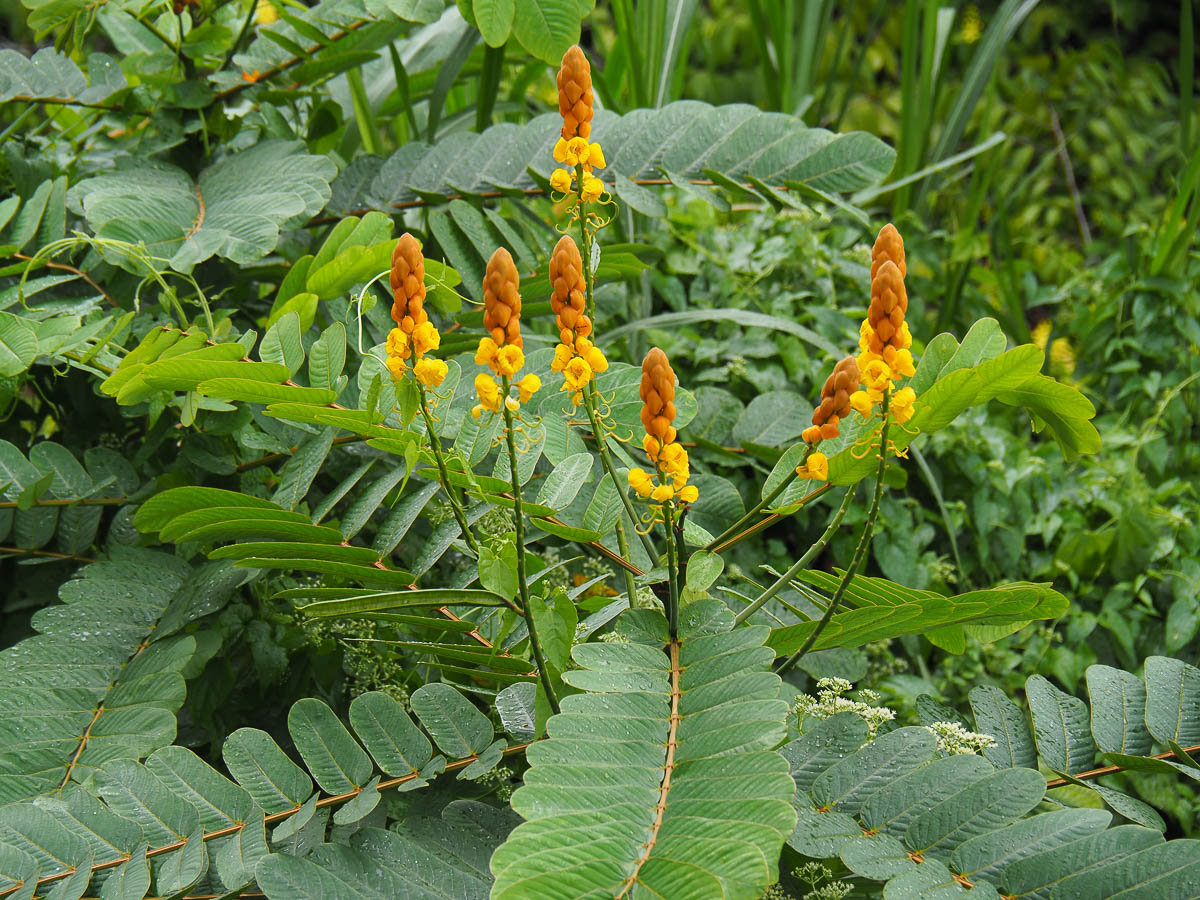Candle Bush
Candle Bush (Senna alata)
Other common names: Candle Bush, Empress Candle Plant, Seven Golden Candlesticks, Candlestick Cassia, Candlestick Senna, Christmas Candle, Ringworm Cassia, Ringworm Bush, Gelenggang, Daun Kurap, 翅荚决

Candle bushes are large, hardy free-flowering shrubs that are commonly seen in rewilding areas, nature parks, in roadside gardens, and biodiversity-attracting gardens. The flowers are highly attractive to bees.
A perennial shrub, Candle Bushes are useful as biodiversity-attracting plants to add a pop of colour to any garden.
This plant is part of the Fabaceae or Bean family, which includes other popular edible fruits like Winged Bean, Peanut, and Sword Bean. All members of the bean family can be used for companion planting as they can fix nitrogen into the soil.
Sun and soil needs:
This plant thrives in 4-8 hours of direct sunlight. This plant can also be grown in at least 6 hours of indirect sunlight, but the plant will flower less. Plants do best in loamy soil in true ground. This plant is also highly tolerant clayey soils and can survive both waterlogged soils and drought, making it an incredibly hardy plant that can adapt to most garden conditions.
Growing:
Candle Bushes are rapid growers and generally does not need fertilizing. The shrub can rapidly grow up to 4m in height and will need to be hard pruned regularly. It is a large and broad plant that can rapidly overwhelm neighbouring plants. Regular pruning to promote airflow will keep the plant healthy, neat, and in control every other month will keep the plant lush and growing steadily.
Propagation:
Candle Bushes can be grown from seed or woody cuttings with rooting hormone.
Common problems & solutions:

This plant is relatively resistant to pests and disease if kept healthy.
If the plant does not receive enough light, it will stop producing flowers. Prune surrounding plants or move the plant to a sunnier spot to promote flower growth.
This plant can be considered weedy if left unmanaged. Regularly prune the plant to maintain its size and remove accidental seedlings if found. Remove unopened seed pods to prevent rapid seedling spread.

